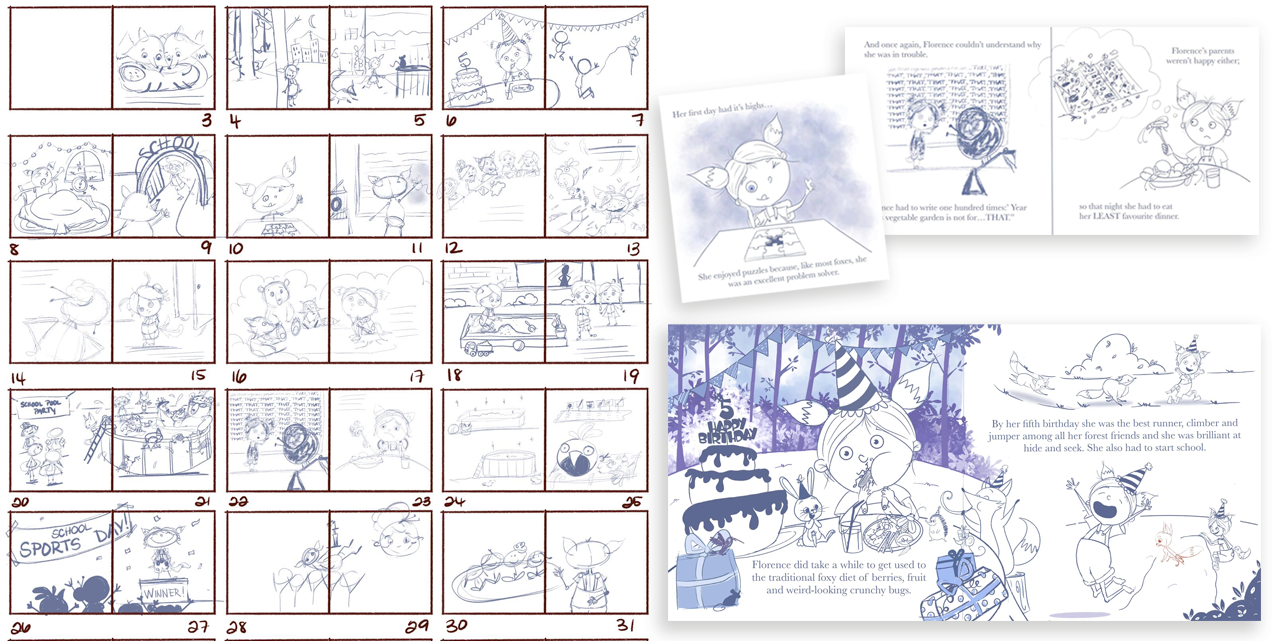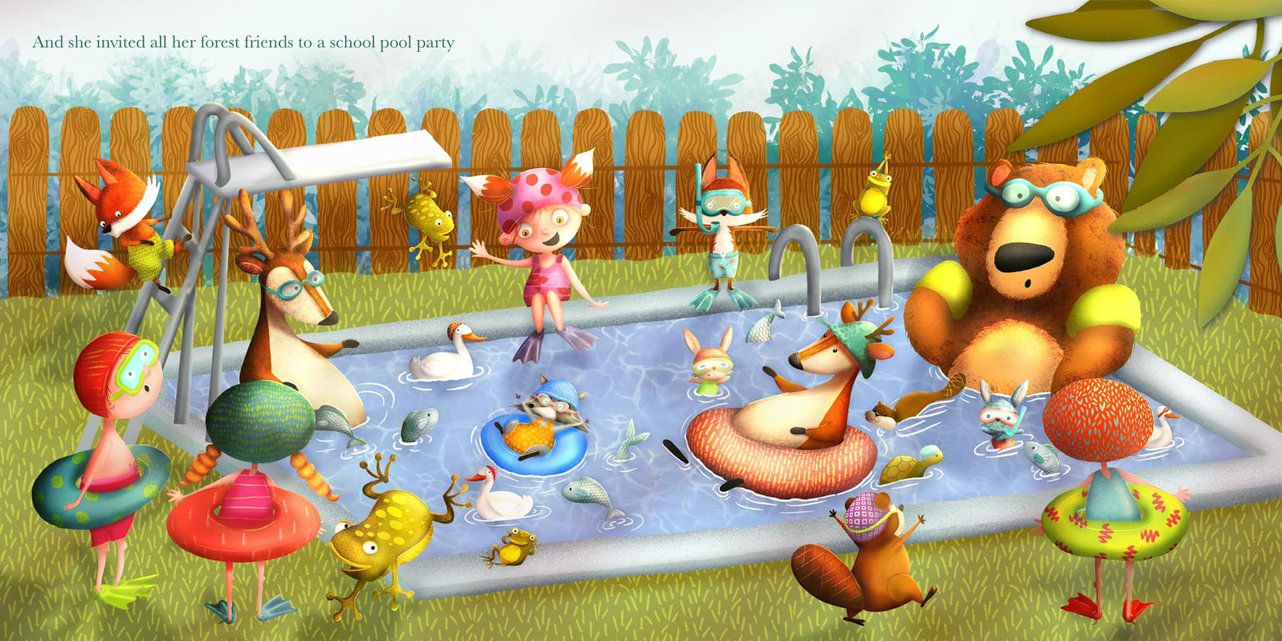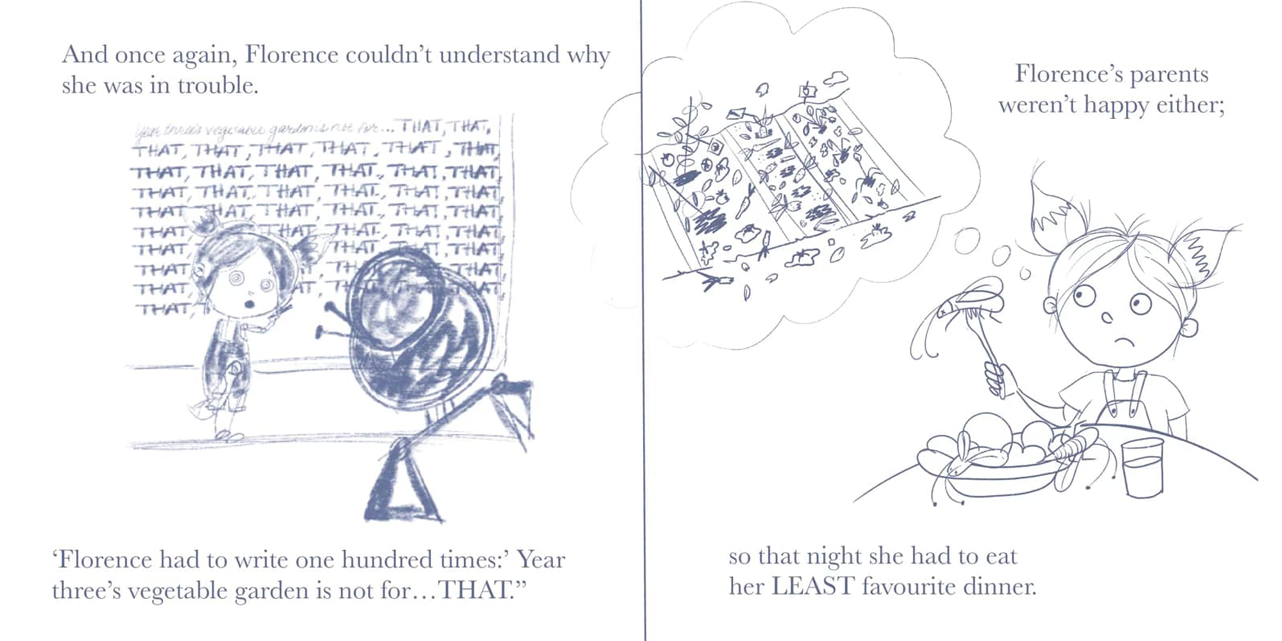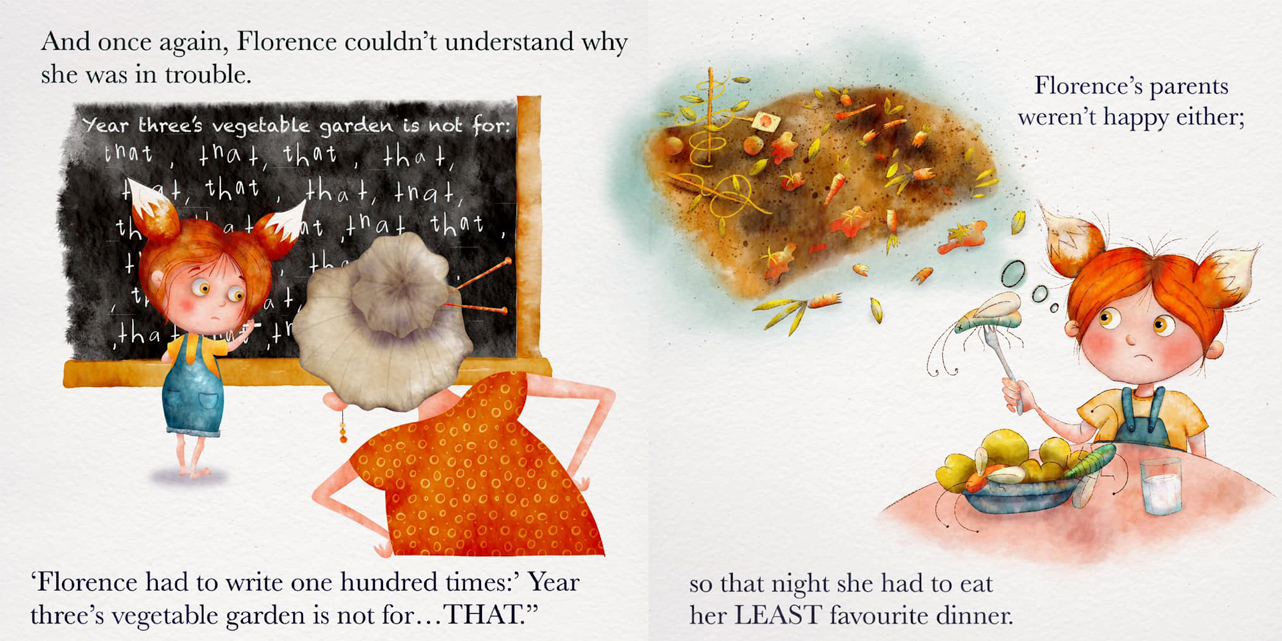Exploring Picture Book Illustration and Mexico with illustrator Merri Nielsen

My name is Merri Nielsen and I am from Spokane, Washington in the United States. In September of 2021, my husband and I decided that we wanted to travel. He retired after a 30-year career in the fire department and I hung up my stethoscope as a registered nurse and we hit the road. We are currently living in Barra de Navidad, Mexico.

When I am not illustrating I enjoy exploring the new town we are living in. I like to practice my Spanish and cook. Cooking has been an enjoyable journey. Trying to cook unfamiliar foods on a two-burner camp-like stove with minimal basic kitchen supplies found in most of the Airbnbs we’ve stayed in has been a learning experience.
I was traveling in Mexico during the 8-week Picture Book Illustration e-Course (PBIC). I was fortunate enough to have a lot of time to spend drawing and working on the course material. I would spend many hours, on and off throughout the day, sitting in the sun on my balcony drawing on my iPad while sitting on my balcony enjoying the sun.

Why did you join the Picture Book Illustration e-Course?
My nephew had reached out to me about a month prior to starting the course asking if I would illustrate a picture book he was working on. I enthusiastically agreed and quickly realized I didn’t know what I was doing. I didn’t know where to start. I briefly thought about using his manuscript for the course but instead, I decided to use the class manuscript "Florence Fox goes to School" (written by Ben Whittacker-Cook) instead.

I am happy that I chose that route. It is a fun manuscript with a lot of visual storytelling opportunities. Plus, it really helped to be on the same page with the rest of the class. It helped with feedback and interacting with the other students.
What was the best thing about the course?
The best thing about PBIC for me was the personalized feedback from Nina and the supportive “Treehouse” online community. The informative course videos and workbook were packed with valuable information that I can refer back to whenever I need to. I also loved the weekly LIVE interviews with industry experts and former PBIC students. They always left me excited, inspired, and more knowledgeable about the industry.

What was the worst thing about the Course?
The worst thing about the course was my sketchy internet. It was never a real problem though because everything was recorded and available when my internet decided to behave.

How did PBIC help with your character design process?
The course really helped me with character design. Nina offers great tools, tips, and techniques to help keep your characters consistent and moving throughout the story. For example, the character mapping process helped me to visualize my character from different angles and in different poses while remaining consistent. I am still working hard to improve in this area, but I now have the tools to guide me through the process.

What was your experience receiving feedback?
I found the feedback extremely useful! Nina has a great eye to help you see ways to improve your scene. She is very gentle and kind with her approach. She actually shows you how to improve your scene by drawing over the areas in question on her iPad and leaving written notes in the margins.

Talk us through the process of thumbnail sketches.
The process of thumbnail sketching is a great way to break down the manuscript. It’s an opportunity to work the manuscript into the allotted number of pages in your book. It gives you a bird’s eye view of the rhythm, pace, and flow of the story and it helped me see the impact of spot illustrations, single spreads, and double spreads. It’s also a great way to get your initial ideas down on paper with a simple sketch.

I learned a lot from storyboarding. One of the main things I learned was to refine my storyboard into more detailed sketches, which I didn’t realize until the end. Most of my storyboards were still rough sketches and incomplete with the intention of adding more details during the painting phase. I realized it’s much easier to paint your final illustration if your storyboard is complete or at least very close to completion.

Did you find making a dummy book useful?
Oh, the dummy book! I was so excited to create a dummy book and be able to hold it and flip through the pages. That was a challenge for me personally. First, trying to find a papelería (stationery store) in my little village to print my dummy book was a challenge. I finally found one after dragging my husband and dog all over town in the blazing sun. Between my limited Spanish speaking skills, slow internet, incompatible hardware, (and did I mention my minimal Spanish?), I was able to get it printed. It’s printed on the thinnest paper known to man and all of the pages are wonky due to their paper trimmer. It was as dull as a butter knife and the gal cutting it was not as passionate about straight cuts and following the cut lines as I wanted her to be. But, even with all of its imperfections, I love it! It’s a great way to view your illustrations as a whole and to see firsthand if the rhythm, pace, and flow are working.
Talk about your final illustration?
Choosing my final illustration/s was a challenge. Because I was working in Procreate I wanted to experiment with different looks and effects. I initially chose a simple page and tried a soft, digital style with a little texture. Next, I chose a more complex page and tried a rougher more textured effect. Then, I tackled the pool scene. I wanted a cleaner look with texture and vibrant color. Working outside in the bright sun not only gave me an overly colorful spread but also sunburned my face and eyes. Lastly, I worked on a few spreads using a watercolor effect, which I really liked. I used the same limited color palette on all the different spreads.

I was very excited to add color to Florence and bring her and her friends to life. Initially, I was a little disappointed that my pieces weren’t exactly how I had pictured them in my head. However, I’m working on improving them!
My techniques definitely changed and still need perfecting. I think what I learned the most was how to tackle large complex scenes on my iPad. I really had to preplan how I was going to utilize the layers most effectively. I really do love the look of traditional mediums best, like watercolor, and would like my work to look less digitized.

If you had the opportunity to do this course over, what would you have done differently?
Knowing what I know now, I think I would have done my thumbnails before my character design. I think it would have helped me narrow down my cast of characters so I could develop them more thoroughly. I also would have firmed up my storyboard spreads before tackling the final painting.

Who would you recommend Picture Book Illustration e-Course to?
I would recommend PBIC to anyone with an interest in picture book illustrating and to authors interested in writing and/or illustrating a picture book.

What’s next for you?
That is a good question. Ultimately, I would love to have the opportunity to illustrate a picture book. In the meantime, I plan on completing Florence Fox and I hope that some of the pieces are good enough to add to my portfolio (which I don’t have yet). I would like to enter some competitions and take some perspective and gesture drawing classes.
To contact Merri, visit Merri's Website or follow her on Instagram.
Information about the Picture Book Illustration e-Course
- Click on the link to find out more about the Picture Book Course (self-paced) and Nina's other courses.
- The next PBIC Live will take place in late 2023/early 2024, click the link to get on the waiting list for PBIC LIVE 2023.
- in the meantime, you can follow Nina on Instagram and Facebook




